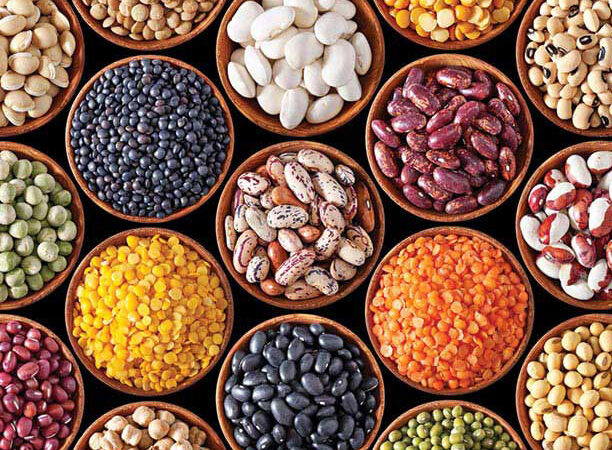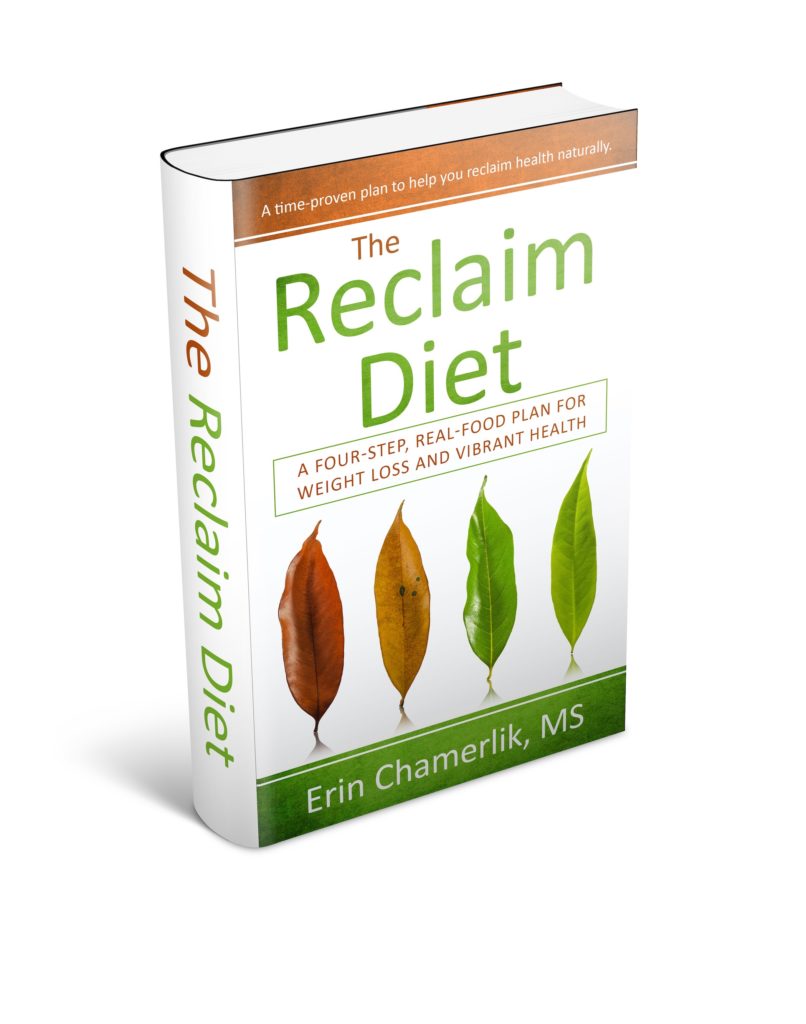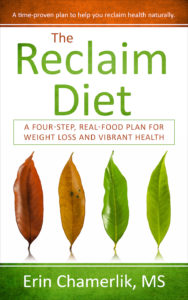
Question: What about grains and legumes?
Grains and legumes are not recommended. This is often surprising to many people because our government and most doctors and dietitians have been telling us to eat more grains and legumes. I will list some of the problems with these foods to help you understand why they are problematic today and how they have contributed to people being overweight and sick.
For those with autoimmune conditions, these foods need to remain out of the diet. If you do not have autoimmune conditions, you might be able to include small amounts of organic, properly prepared, gluten-free grains and legumes back in your diet during Phase 3 and Phase 4. I will explain more in the next few sections that may lead you to conclude that all grains and legumes may be best left on the store shelves.
Three health-damaging reasons to avoid grains and legumes
- High carbohydrates
- Antinutrients
- Contamination with pesticides and herbicides
Most of us grew up believing that eating grains and beans was health-promoting. We trusted the authorities but their advice was wrong. If you are tired of being sick, you have to seek truth and be willing to change when given compelling information that contradicts long-held beliefs.
1. High carbohydrates
Grains and legumes and the processed foods containing them are typically high in carbohydrates, promoting weight gain, insulin resistance and high insulin levels.
Cutting out grains and legumes helps you move toward reducing carbohydrates in your diet. Instead of getting your carbs from grains and legumes, enjoy eating a diet rich in other plants (vegetables, fruit, seeds, nuts). Eating this way improves health dramatically (39).
- Reduces blood sugar and insulin (the fat-storage hormone)
- Increases weight loss, if needed
- Decrease belly fat
- Improves cholesterol and triglyceride levels
Cool beans and not cool beans!
Isn’t it confusing that the word “beans” is attached to so many different foods and so many phrases? There’s green beans, coffee beans, vanilla beans, cocoa beans, kidney beans, black beans and red beans. A ball can hit you on the bean, you can be full of beans and maybe you don’t know beans about computers.
When it comes to sorting beans we can think about cool beans (coffee, vanilla, cacao) and not cool beans (soybeans, peanuts, kidney beans, black beans, pinto beans, navy beans, pea protein), and then there are those middle-of-the-road beans (chickpeas, green peas, lentils, green beans).
(Update: see Sarah Ballantyne, PhD, post to understand why fresh green peas and green beans are generally fine to consume.)
Legumes are mostly starch and only a little protein. For many people, they are not easily digested because they have a certain kind of fiber that can cause digestive issues, like gas and bloating. Dried beans like kidney, black, pinto and navy are very starchy.
One cup of kidney beans has 40 grams of carbohydrate, a hefty amount. If you are trying to lose weight or keep your blood sugar levels stable, “not cool beans” are off the menu.
2. Antinutrients
Antinutrients are chemicals found in certain plants that bind vitamins and minerals and prevent your body from absorbing nutrients. Some of the health problems caused by eating too many antinutrients include inflammation, digestive issues and brain fog.
While there are certain steps you can take (soaking, sprouting, fermenting) to reduce the negative effects of antinutrients, most people do not have the expertise or the time required to properly prepare grains and legumes, so avoidance is best. Here are the top four antinutrients and why they may be problematic.
- Phytates (phytic acid)
- Lectins
- Oxalates
- Gluten
Phytates (phytic acid) in grains and legumes bind minerals like iron, zinc, magnesium and calcium. Instead of your body getting the benefit of the minerals from your food, phytic acid is carrying them out of the body. Mineral deficiencies and bone loss can result. Phytates are toxic to the body’s cells, immune system, and brain. Some of the highest phytate levels are found in soybeans.
Lectin is a protein that can damage the gut and cause bloating, gas and indigestion. Lectins in grains and legumes irritate the lining of the intestine and pass through the gut wall into the bloodstream causing inflammation and damage to other organs and cells in the body. Lectins aggravate autoimmune conditions and damage the cardiovascular system and the brain (40).
Oxalates occur naturally in most plants. Oxalates are normally broken down by healthy bacteria in our digestive tract. For those who have a compromised gut (from poor diet, gut infections, toxins, antibiotic use, stress, food allergies) this normal breakdown of oxalates may not be happening. When oxalates enter the bloodstream instead of being excreted from the body, crystals can form, causing pain and inflammation. How much is too much? Keeping oxalates below 150mg per day is a good goal according to expert Sally Norton. Pick up a copy of her book, Toxic Superfood, to learn more.
Foods highest in oxalates per serving include spinach, Swiss Chard, beet greens, buckwheat, rhubarb, wheat, corn, soy, black and white beans, almonds, cashews, peanuts, potatoes and sweet potatoes, chia seeds and chocolate/cacao. Minimizing the amount of foods high in oxalates may help improve joint pain, signs of aging and autoimmune conditions.
Gluten is the protein typically found in wheat, barley, rye, kamut and spelt, and it contaminates oats. The wheat we eat today is not the wheat of the Bible. Humans have manipulated the genetics of the wheat plant so that wheat has 50% more gluten than it did 50 years ago. It is ubiquitous in the food supply and is found in many processed foods including bread, pasta, beer, soy sauce, crackers, condiments and baked goods.
Gluten is hard to digest and it irritates and inflames the digestive system. Gluten is a common source of allergies and sensitivities. Gluten causes leaky gut, a condition that allows partially digested food to escape out of the digestive tract and into the bloodstream. The immune system is triggered by these food particles setting off a cascade of events that can lead to inflammation throughout the body, including your thyroid, brain, skin, heart and gut.
Are you experiencing joint pain, hives and rashes, autoimmune diseases, thyroid issues, diarrhea or constipation, chronic fatigue, acid reflux, brain fog or stubborn weight gain? It is possible that you have leaky gut and the first step in healing is to remove foods that damage the gut (like grains and legumes) and replace those foods with healthy, healing foods.
Is there a way to avoid antinutrients?
Soaking and sprouting grains, seeds and nuts will increase the ability to digest the food and absorb more nutrients, but it does not completely remove all antinutrients.
Lectin is the main antinutrient in legumes. Lectins are broken down by heat. If you soak dried beans in water with salt for 12 to 24 hours, rinse, drain and then cook them for three hours, the lectins and phytic acid are broken down and inactivated but they can still be difficult to digest. It may not be worth your time and effort to eat the “not cool beans” when you consider that the nutrients in beans can easily be found in other foods (without worry). Lentils are often contaminated with small stones and barley (gluten). All lentils need to be cleaned and sorted carefully. Those who strictly avoid gluten may not want to risk a cross contamination of lentils with barley. Lentils need to be soaked for 10-12 hours, rinsed and cooked. Soaking and cooking removes 76% of the phytic acid.
Canned beans and canned lentils have not been properly prepared by soaking and cooking, so it is best to avoid them.
For the first 30 days on the Reclaim Diet plan, I do not recommend eating any legumes, including lentils. This will allow time for your digestive system to heal. In Phase 3 or Phase 4, if you want to try properly prepared legumes in moderate portions, a few times a week, that is an option. Just be sure to buy organic dried beans to avoid contamination with glyphosate (Roundup®). You can read more about that in section three of this chapter.
Soy has problems that go beyond antinutrients
Soy causes more health problems than other beans. Like all legumes it has antinutrients that are not easily destroyed by cooking. There are four other reasons to never consume soy, unless it is small amounts of organic, fermented soy (miso, natto, tempeh).
- Soy contains goitrogens that inhibit thyroid function.
- Currently, 94-percent of soy in the United States is genetically modified. Genetically modified organisms (GMOs) are not safe to eat. Organic soybean fields have been cross-contaminated with genetically modified soybeans.
- Soy has phytoestrogens that mimic estrogen in the human body. This contributes to cancer, reproductive problems, and abnormal sexual development in infants (42).
- Infants fed soy formula receive the estrogen equivalent of at least five birth control pills per day (43).
Learn more: Get The Reclaim Diet book

Recommended
-
Dandelion for Liver Support and Health BenefitsJuly 20th, 2024
-
Modified Citrus PectinJuly 11th, 2024
-
Bentonite Clay Mask for Face and ArmpitsJuly 8th, 2024
-
Two Supplements for Erectile DysfunctionJune 30th, 2024









